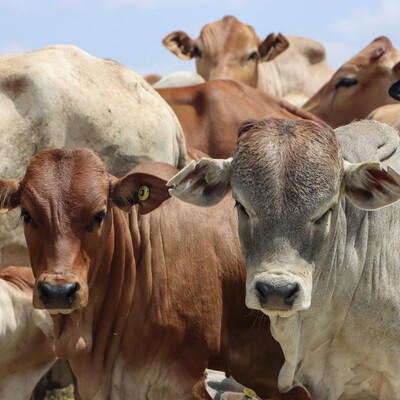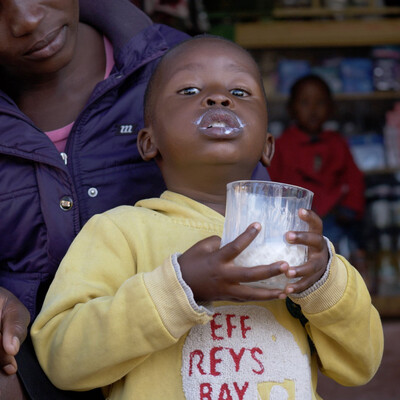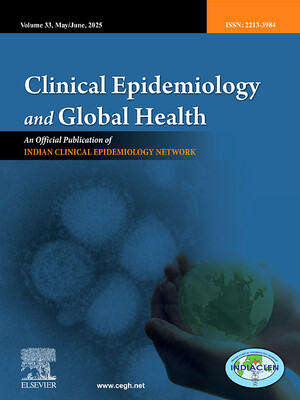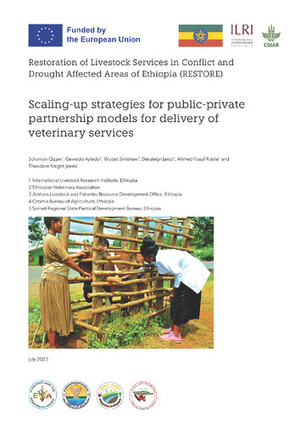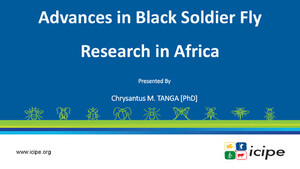
Tanzania’s livestock sector stakeholders define entry points for improving herd health services
Traditional extension messaging often lacks effective herd health management approaches to address animal health and production challenges that go beyond individual livestock diseases and therapy.
A herd health approach embraces more holistic, preventive and context-specific herd management including husbandry, vaccination, improved nutrition, better reproductive management, enhanced hygiene, appropriate housing and animal welfare. Such an approach, with appropriate incentives for private service providers, is best suited for private goods services than publicly funded extension services that are in decline in Tanzania. Recent national statistics show that only 9% of livestock keepers are accessing extension services today compared to 55% in 2008.
A consultation workshop on 4–6 October 2022 in Dar es Salaam sought to find suitable herd health management approaches for Tanzania. The CGIAR Initiative on Sustainable Animal Productivity hosted-workshop engaged 56 participants including researchers, veterinary practitioners, policymakers, and extension service providers in the co-creation of integrated herd health plans and mechanisms for delivery in the dairy and chicken value chains. The plans were aligned with theories of change and innovations developed at the initiative’s inception meeting. The regions targeted by the innovations are Kilimanjaro, Tanga, and Lindi in Tanzania.
While the consultation was by design dominated by private inputs and service providers including those previously engaged in Maziwa Zaidi and Women in Business projects, other key stakeholders participated. Key public sector participants included representatives from the Ministry of Livestock Development and Fisheries (MLF), regional and local government representatives, and government agencies such as the Tanzania Dairy Board (TDB) and the Tanzania Livestock Research Institute (TALIRI) and non-governmental organizations in the dairy and poultry sectors.
The workshop deliberated on reasons behind the declining access to extension and opportunities to mitigate the decline. Significant attention was given to enhancing the private sector's role in delivering livestock inputs and services, priority health constraints, vaccines in use and ingredients of a herd health approach for dairy cattle and chickens. Participants showed a keen interest in information and communication technology (ICT)/digital innovations, such as smartphone-based tools, to overcome limitations in capacity and ease the bundling of services.
Priority diseases for dairy cattle in Tanzania were listed as foot-and-mouth disease, contagious bovine pleuropneumonia (CBPP), East Coast fever (ECF), brucellosis, anthrax, and black quarter (BQ). The most important chicken diseases listed were Newcastle disease, coccidiosis, infectious coryza, fowl pox, and Fowl typhoid.
Presentations on generic best practice herd-health management approach informed discussions on content for an improved and sustainable herd health delivery plan for a specific context(s) and needs including feasibility, acceptability, sustainability, gender sensitivity, impact on animal welfare, optimal delivery pathways (public, private, public-private), policy implications, who pays, capacity gaps, and new skills and tools that are needed. These considerations were used to prioritize herd health constraints to be addressed.
The priority herd health constraints identified per site and in order of importance were:
• Tanga dairy value chain: animal nutrition, fertility/reproductive health management, and record keeping
• Kilimanjaro dairy value chain: fertility management and animal nutrition
• Kilimanjaro and Lindi chicken value chains: quality breeds of day-old chicks, quality feeds and flock health management targeting common diseases such as Newcastle disease (most common), fowl pox, fowl typhoid, infectious coryza and coccidiosis.
These technical elements will be packaged in a herd health plan and combined with a set of institutional components to enable their delivery by agripreneurs. The herd health plan will be piloted alongside the work of the Kuza Biashara’s One Network platform as an enabler for agribusiness linkages and extension.
However, the initiative, which also focuses on livelihoods, nutrition and gender inclusion, packages delivery of the plan will depend on context and in consultation with farmers' willingness to pay for the services directly or through producer groups. In addition, the initiative will deliver the plan and support activities to grow the technical and business capacities of the agripreneurs to effectively take up and deliver the herd health packages, working with a cohort of participants from front-line service delivery applicants who are expected to join the platform. Successful applicants will be linked to more established service providers interested in widening and deepening their service provision.
Amos Omore, the International Livestock Research Institute (ILRI) representative in Tanzania and the region, explained the objectives of the workshop and the initiative, noting that stakeholder inputs from the first meeting in March had helped to complete theories of change and initiate field activities. He added that ‘developing a herd health plan in a participatory way will ensure relevance and effectiveness in ensuring technologies and practices for sustainable productivity under the initiative.’
Tanzania’s director for research, training, and extension at MLF, Angello Mwilawa, presented a keynote address on the experiences of extension services and their delivery in the livestock sector in Tanzania. This was complemented by another keynote made by the director of veterinary services, Hezron Nonga, on experiences of privatizing veterinary services in Tanzania. Practical experiences on the application of digital innovations, one on diagnostics and another on herd health were shared through online presentations from Crawford Revie of the University of Strathclyde, UK, and James Hanks of PAN Livestock Services Ltd, UK, respectively. These were complemented by experiences on the use of digital innovations in Tanzania in the livestock sector through the M-Kilimo (Ufugaji module) platform that was shared by Baltazar Kibola (head of the ICT unit, MLF) and the use of ICT in the African Dairy Genetic Gains (ADGG) platform that was shared by Neema Kelya. Theo Knight-Jones, a principal scientist at ILRI highlighted herd and flock health preventive management issues for consideration including related losses such as productivity, antimicrobial resistance (AMR), zoonoses, poor food safety as well as good management practices.
In his closing remarks, Daniel Komwihangilo, principal scientist at TALIRI, commended the CGIAR initiative for its alignment with government policies and programs of strengthening extension services, public-private sector partnerships, and the adoption of digital solutions in the sector.
The inputs generated from the consultation are being applied to refine specific herd health plan(s) in consultation with farmers and interested service providers for piloting in specific contexts. The focus will be on increasing private sector participation in the delivery of herd health services and leveraging ICT/digital platforms for farmer profiling and e-extension.
Photo Credit:
Participants of the ILRI SAPLING-Herd Health Initiative workshop pose for a group photo after the day's engagement (photo credit: ILRI/Gloriana Ndibalema).






